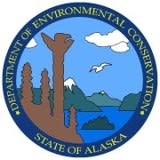Wild vs. Farm Raised Salmon

Wild vs. Farmed Raised Salmon
With all the media hype about getting more Omega 3’s, consumers have been advised that fish could be a good source of these helpful fats. What are Omega 3’s? Well, they are unsaturated fats that have anti-inflammatory properties. This is important because inflammation in our bodies has been shown to contribute to the formation of disease. So why the big push for these helpful fats now? Our modern American diet has a very unbalanced ratio of Omega 6 to Omega 3 (somewhere around 15:1). This is due to the processing of foods and the high levels of grain/corn fed to the meat we eat (which is high in Omega 6). We really need to bring this ration closer to 2:1 for optimal health. Fish contains EPA and DHA Omega 3’s. These are the usable form of Omega 3, and provide big benefits internally for us.
Health Aspects
So if fish is so healthy, why the debate of farmed vs. wild? Wouldn’t it all be the same? More than 80% of the fresh salmon eaten in the U.S. is farmed, so it should be a healthy option. Unfortunately this is not the case. Although both farmed and wild fish (in this case we will refer to the salmon studies) contain Omega 3’s, wild fish provided much more usable Omega 3 (33% more). The reason for this discrepancy is that both Omega 3 and Omega 6 use the same enzymes for conversion into usable form. So when a food has high levels of Omega 6 (pro-inflammatory agents), as farmed salmon does, they use up the available conversion enzymes to produce pro-inflammatory agents, while preventing the usable form of Omega 3 to be produced. Yikes.
Farm-raised salmon also has much higher fat content than wild fish. Why? Because wild fish swim more. Simple as that. Farmed fish get big and fat because they are marine couch potatoes.
Disease and parasites should exist in relatively low levels with fish simply scattered about in the ocean. However, they can run rampant in salmon farms. The fish are packed densely together which encourages the spread of disease. In order to survive, the salmon are vaccinated as babies and then given antibiotics or pesticides later in life to prevent infection.
Sea lice, in particular, are a real problem. In a recent L.A. Times story, Alexandra Morton, an independent biologist and critic of salmon farms, found that 78 percent of farmed salmon were covered with a fatal load of sea lice. Younger salmon that she caught further away from the farmed salmon were pretty much lice-free. At the first sign of a sea lice outbreak, farms add emamectin benzoate, a pesticide, to the salmon’s feed.
 A study published in Science reported that some varieties of farmed salmon also contained high levels of cancer-causing chemicals called PCBs. The PCBs come from the fish meal and fish oil the salmon is fed. Farmed salmon in US grocery stores was tested, and because of the higher fat content of farmed fish (fat stores toxins really well), 16 times more PCB’s were found in the farmed salmon than in wild. (September 8, 2003)
A study published in Science reported that some varieties of farmed salmon also contained high levels of cancer-causing chemicals called PCBs. The PCBs come from the fish meal and fish oil the salmon is fed. Farmed salmon in US grocery stores was tested, and because of the higher fat content of farmed fish (fat stores toxins really well), 16 times more PCB’s were found in the farmed salmon than in wild. (September 8, 2003)
Also coming from the fish feed are PBDEs. These are actually flame-retardant additives used widely in electronics and furniture. Unfortunately they are appearing in increasing amounts in fish, and farmed salmon contain significantly higher levels of these polybrominated diphenyl ether (PBDE) compounds than wild salmon, according to research published in the August 11, 2004 issue of Environmental Science and Technology.
PBDEs are endocrine disrupters that have been shown to have reproductive toxicity, and are also suspected to play a role in cancer formation.
One other important issue in the farmed vs. wild fish debate is the addition of color to farmed salmon. Have you noticed when you go to the seafood section of the grocery store, a lot of what you see says “color added”? Salmon get their color in the wild from eating pink krill. Farmed salmon are fed canthaxanthin, a synthetic pigment manufactured by Hoffman-La Roche. Fish farmers can choose just what shade of peach their fish will display from the pharmaceutical company’s trademarked SalmoFan, a color swatch similar to those you’d find in a paint store. Without help from Hoffman LaRoche, the flesh of farmed salmon would be a pale halibut grey.
Ecological Impact and Sustainability of Wild Alaskan Salmon
The increase in the farming of salmon has been an ongoing concern to researchers who study the ecological impact of farmed salmon. This concern includes the impact of farming on the wild salmon population. Some researchers have raised the question of whether sustainable salmon farming is even possible, given the natural habits of salmon and the unique habitats that have historically supported their vitality.
So now that we have established the risk and environmental impact of farmed salmon, we present a healthy solution – Wild Alaskan Salmon.
Monterey Bay Aquarium in California has recently determined Alaskan salmon to be the only low-risk salmon in terms of four sustainability criteria: the inherent vulnerability of the fish, the effects of fishing on the overall habitat, the status of wild stocks, and the nature of the by-catch (the other types of fish that are caught unintentionally during salmon fishing).
The human population in Alaska is among the smallest of anywhere else in the US and even most places in the world. Alaska also has very little heavy industry. There are strict regulations for development activities such as road building, logging, mining, and sewage treatment.
 The State of Alaska Department of Environmental Conservation (ADEC) has a regulatory section dealing specifically with water quality. Sewage and other potential pollutants are closely regulated to ensure high water quality. In addition, Alaska’s Anadromous Fish Act requires prior approval for any in-stream construction activities.(Alaska Statute 16.05.870). Alaska also has a Forest Practices Act requiring buffer zones from logging along salmon streams to prevent erosion and protect spawning and rearing habitat.
The State of Alaska Department of Environmental Conservation (ADEC) has a regulatory section dealing specifically with water quality. Sewage and other potential pollutants are closely regulated to ensure high water quality. In addition, Alaska’s Anadromous Fish Act requires prior approval for any in-stream construction activities.(Alaska Statute 16.05.870). Alaska also has a Forest Practices Act requiring buffer zones from logging along salmon streams to prevent erosion and protect spawning and rearing habitat.
Effective, precise management assures Alaska’s fisheries are productive, sustainable, clean, and healthy-as mandated by the Alaska state government. Alaska has served as a model of fishery management around the globe since admittance into the Union in 1959. Alaska is the lone state in the nation with a constitutional mandate stating that all fish “be utilized, developed, and maintained on the sustained yield principle”, which is one main reason they have been able to accomplish such sustainability.
Wild Alaskan Salmon lead the low-risk category for wild-caught salmon. Southeast Alaskan chum, sockeye, coho, pink, and chinook salmon, together with Kodiak coho, pink, and chum salmon have all been evaluated for contaminant consumption risk involving many POPs (including dioxins, dioxin-like compounds, or DLCs, and polychlorinated biphenyls, or PCBs) and have been found to be the lowest risk category of wild-caught salmon for regular consumption. This lower contamination risk amongst all wild-caught salmon is one of the reasons why wild-caught Alaskan salmon is the recommended salmon of choice.
Based on a combination of sustainability and potential contamination concerns, it is recommended that you select wild-caught Alaskan salmon above all other forms of salmon currently available.
The World of Wild Alaskan Salmon
When you purchase or consume Wild Alaskan Salmon, you are supporting small, family operations. Instead of of consuming low-quality, mass produced food, you can eat salmon that has been individually picked out of Alaska’s pure, icy waters. Someone had to work very hard to get that fish to you. A lot of fishermen leave their families for weeks each summer just to work harder and longer than they do at home. The result is that you have the opportunity to purchase this fish, in its healthy, unadulterated form, and eat it in your home or at a restaurant.
 We are so disconnected from where our food comes from. Purchasing and consuming Wild Alaskan Salmon directly from the fisherman who caught it, reconnects you to a healthy and delicious food option, while supporting the hard-working people who make it possible. And not only are you supporting those individuals, you are investing in your health and that of your next generations. Pass on good food sense to your children. We should be picky of what we choose to eat. It is important to become educated on the health effects of our choices.
We are so disconnected from where our food comes from. Purchasing and consuming Wild Alaskan Salmon directly from the fisherman who caught it, reconnects you to a healthy and delicious food option, while supporting the hard-working people who make it possible. And not only are you supporting those individuals, you are investing in your health and that of your next generations. Pass on good food sense to your children. We should be picky of what we choose to eat. It is important to become educated on the health effects of our choices.
We must stand up for our food rights. We must demand to know where our food comes from, what it is made of, and who is benefiting from our choices. Only when we decide to do this will we see the landscape of food and the food industry change. This is your chance to take a stand. When it comes to your salmon choice, choose non-GMO, chemical and dye-free. Choose Wild Alaskan Salmon.
Written by Angela Echo-Hawk, 2013
References:
https://www.pritikin.com/eperspective/0710/benefitsRiskSalmon.shtml
https://www.whfoods.com/genpage.php?tname=foodspice&dbid=104
Fish Oil Omega 3s written by Joyce A. Nettleton, DSc, RD, ScienceVoice Consulting, Denver, CO
The Immune System written by Joyce A. Nettleton, DSc, ScienceVoice Consulting, Denver, C









